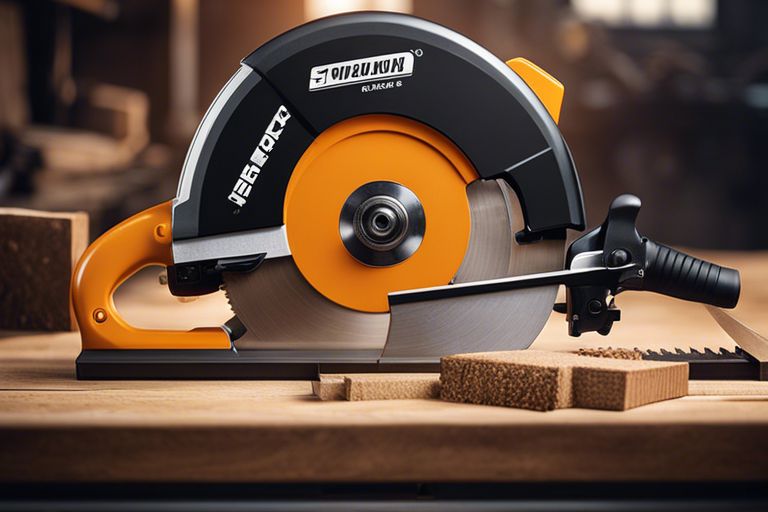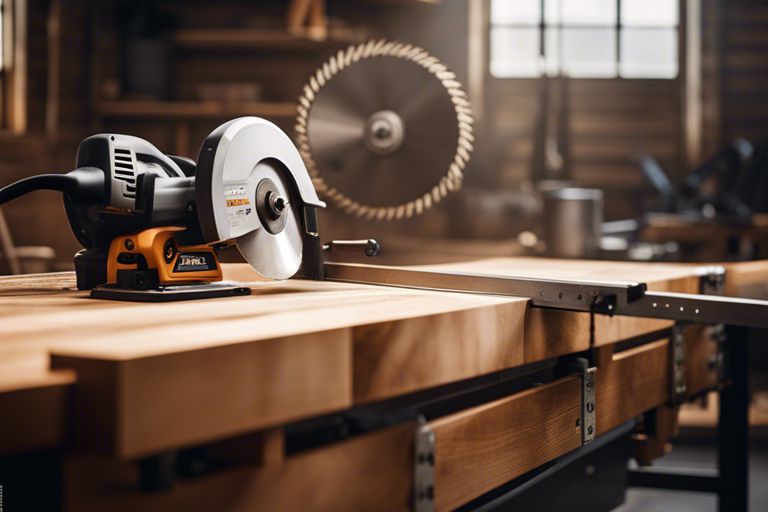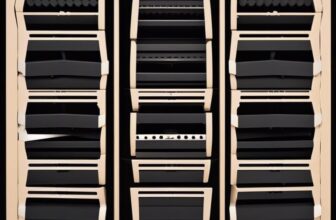Which are left hand circular saw

Curious about the rare breed of left hand circular saws? Whether you’re a southpaw or simply looking to switch up your cutting game, these uniquely designed power tools offer a range of advantages that can make a significant difference in your woodworking projects. From better visibility of the cutting line to reduced kickback risks, left hand circular saws provide safer, more efficient cutting experiences. Join us as we explore the top left hand circular saw models on the market and discover which one is the perfect fit for your workshop needs.

Key Takeaways:
- Left Hand Circular Saw: A left hand circular saw is designed for left-handed individuals, enabling them to have better visibility of the cutting line and more control over the saw.
- Blade Placement: In a left hand circular saw, the blade is positioned on the right side of the motor, allowing left-handed users to easily follow the cutting line while operating the saw.
- Comfort and Safety: Using a left hand circular saw can provide left-handed users with improved comfort and safety, making the cutting process more efficient and manageable for them.

Understanding Circular Saws
Clearly, a circular saw is a versatile and necessary tool for many woodworking and construction projects. This power tool consists of a toothed metal disc or blade that spins rapidly to cut through various materials with precision and ease.
Different Types of Circular Saws
- Hand-held Circular Saws: versatile and portable, suitable for a wide range of cutting tasks.
- Table Saws: stationary saws used for cutting large sheets of materials, often with added safety features.
- Miter Saws: specialized for making crosscuts and precise angle cuts.
- Track Saws: guided by a track or rail for straight and accurate cuts.
- Cordless Circular Saws: powered by rechargeable batteries for increased mobility.
Perceiving the differences between these types of circular saws can help users choose the right tool for their specific needs.
On the other hand, for left-handed individuals or those seeking greater visibility while cutting, a left hand circular saw can be a game-changer.
Key Features of Left Hand Circular Saws
- Blade Position: blade positioned on the left side for better visibility of the cutting line.
- Direct Sighting: easier to follow the cutting line for increased accuracy.
- Comfort and Safety: designed ergonomically for left-handed users to operate comfortably and safely.
- Dust Extraction: efficient dust removal system for a cleaner work area.
- Power and Performance: delivers high cutting power and precision for various materials.
Recognizing the key features of left-hand circular saws can enhance productivity and safety in woodworking and construction tasks.
Even though left-hand circular saws have specific features catered to left-handed users, right-handed individuals can also benefit from their ergonomic design and cutting precision.
- Improved Visibility: blade on the left side provides clear sight of the cutting line.
- Enhanced Safety: ergonomic design reduces strain and enhances control during operation.
- Precision Cutting: accurate cuts for intricate woodworking projects.
- Efficient Dust Removal: keeps work area clean and enhances visibility while cutting.
- Portable Options: cordless models offer mobility without compromising power.
Recognizing the advantages of left-hand circular saws can lead to more efficient and precise cutting results in various woodworking applications.
This power tool offers enhanced safety and precision for both left-handed and right-handed users. It is important to consider the specific features and benefits of left-hand circular saws to determine if it is the right tool for your woodworking or construction projects. By understanding the key differences and advantages, users can make informed decisions and maximize the efficiency of their work.
Selecting a Left Hand Circular Saw
Factors to Consider
To ensure that you choose the perfect left hand circular saw for your needs, there are several factors to consider. Firstly, check the blade size to ensure it will meet your cutting requirements. Next, consider the power source – whether you prefer a corded or cordless model. Additionally, the ergonomics and weight of the saw are important for comfortable use. Another crucial factor is the adjustability of the saw, including the depth and angle settings. Any additional features such as a laser guide or dust collection system should also be taken into account.
Top Recommended Models
Hand-picking the top left hand circular saw models can be a daunting task. Ensure you select a saw with a powerful motor to tackle tough cutting tasks effortlessly. Look for models with a durable construction and ergonomic design for prolonged use without fatigue. A built-in safety feature such as an electric brake adds an extra layer of protection during operation. Precision cutting and smooth operation are also key factors to consider when choosing a left hand circular saw.

Using Left Hand Circular Saws Safely
Safety Precautions
Hand when using left-hand circular saws, it is crucial to follow crucial safety precautions to avoid accidents. Always wear protective gear such as goggles, gloves, and ear protection to prevent injuries from flying debris and loud noise. Make sure the saw is unplugged when changing blades or making adjustments to avoid accidental starts. Keep the work area well-lit and free of clutter to maintain a clear, safe workspace.
Best Practices
Best practice when using a left-hand circular saw is to always use a sharp blade and ensure it is securely fastened in place. Positioning your body correctly with a stable stance and a firm grip on the saw will help maintain control during operation. Another crucial practice is to use both hands to operate the saw for better stability and precision in cutting.
It is important to follow the manufacturer’s instructions and never attempt to override safety features on the saw. Regularly inspect the saw for any damage or wear, and always disconnect it from power when not in use. By following these best practices, you can ensure a safe and efficient cutting experience with your left-hand circular saw.
Maintenance and Care
Routine Maintenance Tips
Now is the time to focus on keeping your left-hand circular saw in top condition with some routine maintenance tips. Bear in mind, regular maintenance can extend the life of your tool and ensure it operates safely and efficiently. Make it a habit to always clean the blades and check for any signs of wear and tear before each use. Inspect the power cord for any damage, and regularly lubricate the blade adjustment mechanisms to prevent rust buildup. Keep the saw clean and dry to prevent any dust or debris from affecting its performance. Assume that a well-maintained saw will deliver precise cuts and last for years to come.
Troubleshooting Common Issues
To troubleshoot common issues with your left-hand circular saw, it’s necessary to be proactive in identifying and addressing potential problems. For instance, if you notice the saw blade is vibrating excessively during operation, it could indicate a balance issue or a loose arbor nut. Check for any loose parts or obstructions that may be causing the vibration. Uneven cuts can be a sign of a dull blade or improper blade alignment. Make sure to sharpen or replace the blade as needed and adjust the alignment for accurate cuts. For smoke or burning smell coming from the motor, immediately stop using the saw and inspect for any overheating or electrical issues that may require professional attention.
Final Words
With this in mind, left-hand circular saws are a valuable tool for those who prefer a better line of sight and more control when cutting. If you are in the market for a corded left-hand circular saw, The Home Depot offers a variety of options to choose from. Check out their selection of Corded – Left – Circular Saws to find the right tool for your cutting needs.
FAQ
Q: What is a left-hand circular saw?
A: A left-hand circular saw is a type of circular saw where the blade is positioned on the left side of the motor. This orientation allows for better visibility of the cutting line for right-handed users and reduces the risk of the sawdust being blown towards the user’s face.
Q: What are the advantages of using a left-hand circular saw?
A: Some advantages of using a left-hand circular saw include a clearer view of the cutting line for right-handed users, better control over the saw during cutting, and a reduced chance of dust or debris being thrown back at the user.
Q: Can left-handed users use a left-hand circular saw?
A: Yes, left-handed users can also use a left-hand circular saw. While the design may be optimized for right-handed users, left-handed users can still operate the saw effectively by adjusting their cutting technique to account for the blade position.





